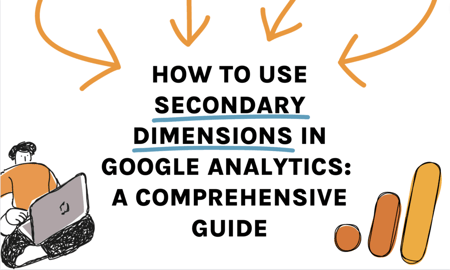Transform Your Information Understanding With Secondary Dimensions
Discovering information via the lens of additional dimensions opens a world of untapped understandings, providing a much more nuanced perspective on the complexities of your dataset. By deciphering the layers beneath the surface area metrics, you can discover patterns and partnerships that may have or else gone undetected, paving the way for educated decision-making and strategic optimizations. This critical application of additional dimensions not just enriches your information comprehension but additionally works as a catalyst for opening the full possibility of your analytics undertakings.
Benefits of Second Dimensions

Additional measurements additionally enable services to perform more thorough performance assessments. By layering extra measurements onto existing information, organizations can evaluate the influence of numerous factors on essential metrics, assisting them make even more enlightened choices. Second measurements facilitate the identification of new opportunities for optimization and growth by uncovering connections that might have or else gone undetected. Generally, the use of second measurements results in much more insightful and robust data evaluation, encouraging organizations to drive strategic activities based upon a much deeper understanding of their information.

How to Apply Second Measurements
To properly apply additional dimensions in information analysis, businesses need to initially determine vital variables that align with their logical goals and purposes. This includes identifying the specific metrics and measurements that are most pertinent to the insights they seek to obtain from the information. When these vital variables are identified, services can then select the proper second dimensions to improve their evaluation further. It is vital to take into consideration just how these second measurements will certainly supply added context and deepness to the main information being examined.

Analyzing Data With Secondary Dimensions
Making use of additional measurements in information evaluation boosts the depth and context of insights originated from key information. By including additional dimensions into your evaluation, you can obtain a much more detailed understanding of the connections and patterns within your data. This procedure includes taking a look at the primary data via different lenses or perspectives, which can expose surprise connections or patterns that might not be immediately noticeable when examining the data making use of just main dimensions.
Analyzing information with additional measurements enables you to section and group your information in different means, supplying a more nuanced sight of your dataset. secondary dimensions. This division can assist you recognize particular variables that may be affecting the results you are studying. By piercing down into the information utilizing second dimensions, you can reveal important understandings that can guide decision-making and approach advancement
Ideal Practices for Secondary Measurements
When integrating additional dimensions into data evaluation, accuracy in defining the measurements is crucial for removing significant insights. It is vital to pick second dimensions that match the key information properly.
Another best practice is to avoid redundancy in measurements. Guarantee that the additional measurements include brand-new viewpoints or details to the analysis, instead of duplicating info currently existing in the key measurements. This will assist stop confusion and improve the analysis of the information.
Additionally, it is very important to take into consideration the scalability of the analysis when choosing secondary dimensions. Choose dimensions that can be easily increased or readjusted as required to fit future information requirements or changes in logical emphasis. By following these ideal techniques, experts can make best use of the worth of additional dimensions in information analysis and gain deeper understandings right into their datasets.
Maximizing Insights With Additional Dimensions
Including additional dimensions strategically boosts information analysis by providing a much deeper understanding of the connections within the dataset (secondary dimensions). By making best click over here now use of understandings with secondary measurements, analysts can uncover beneficial patterns, patterns, and reliances that may not be quickly evident when taking a look at the data via primary measurements alone
One key benefit of using second dimensions is the capacity to segment and filter information a lot more precisely. This division enables an extra granular analysis of details subsets within the dataset, making it possible for analysts to recognize correlations and causations that could have otherwise been ignored.
Moreover, second dimensions can assist in contextualizing primary information points by adding layers of details that provide an even more comprehensive view of the information. This contextualization is important for making educated decisions based on an all natural understanding of the dataset.
Conclusion
Finally, incorporating additional measurements in information analysis processes uses a more detailed and nuanced understanding of info, bring about enhanced insights and tactical decision-making. By incorporating added variables that straighten with analytical objectives, concealed trends and connections can be disclosed, giving a more comprehensive and contextualized sight of information. This strategy makes the most of the capacity for optimization and discovers brand-new possibilities within procedures.
Overall, the utilization of additional dimensions leads to much more informative and durable information evaluation, equipping organizations to drive critical activities based on a deeper understanding of their data.
Making use of second dimensions in information evaluation boosts the deepness and context of understandings acquired from official source primary information.Assessing information with additional dimensions allows you to segment and group your information in numerous means, supplying a much more more nuanced view of your dataset.When incorporating second dimensions right into information analysis, precision in specifying the measurements is important for removing purposeful understandings. Make certain that the second measurements add brand-new perspectives or details to the analysis, instead than duplicating details currently present in the key measurements.